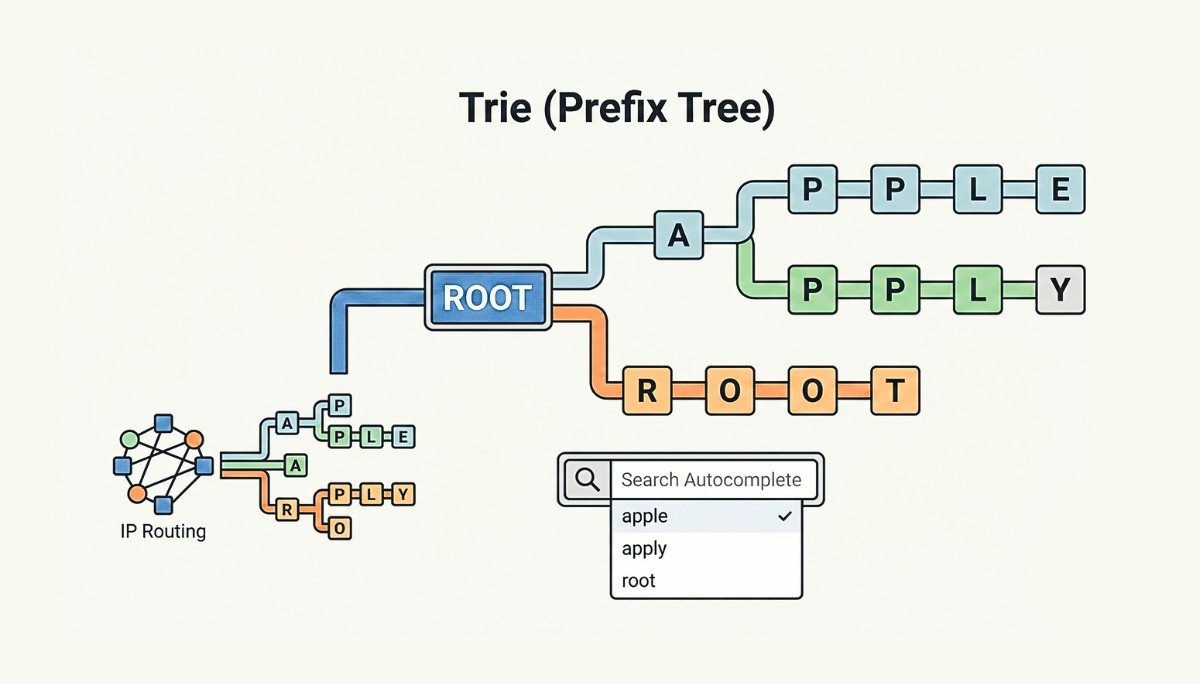How Computer Vision Powers Self-Driving Cars: AI, Safety & Benefits
By
Liz Fujiwara
•
Jul 31, 2025
How do self-driving cars see and understand their surroundings? The answer lies in computer vision technology for autonomous vehicles. Acting as the eyes of these vehicles, computer vision enables them to interpret the environment, navigate roads, detect obstacles, and make split-second decisions to ensure safety.
This technology is the backbone of autonomy, allowing cars to process visual data from cameras and sensors in real time. By combining computer vision with machine learning and deep learning models, autonomous vehicles can recognize traffic signs, pedestrians, and other vehicles, all while adapting to changing road conditions.
In this article, we’ll explore how computer vision powers self-driving cars, break down its key components, and examine its real-world applications that are shaping the future of transportation.
Key Takeaways
Computer vision enables autonomous vehicles to perceive their surroundings, enhancing navigation and safety by interpreting visual data from cameras in real time.
Key components such as camera-based systems and sensor fusion improve object detection, lane detection, and path planning, allowing vehicles to adapt to diverse driving conditions.
Despite significant advancements, challenges like regulatory barriers and public acceptance remain, requiring continuous technological improvements for the successful deployment of self-driving cars.
The Role of Computer Vision in Autonomous Vehicles

Computer vision acts as the eyes of a self-driving car, enabling it to perceive its surroundings with remarkable accuracy. This technology significantly enhances the ability of autonomous vehicles to navigate using cameras alone, as demonstrated by Tesla’s recent adoption of a vision-only occupancy network. These vehicles process visual information to make real-time decisions, much like human drivers interpret the road through sight.
The processing unit within a vehicle is a marvel of modern engineering. It interprets the visual data captured by cameras and makes critical driving decisions based on this information. This capability allows self-driving cars to understand and respond to dynamic driving scenarios, ensuring a safer and more efficient journey.
Visual data interpretation is not just about navigation; it’s also about safety. By understanding visual cues in its environment, a self-driving car can anticipate potential hazards and react proactively. This approach reduces the likelihood of accidents and enhances overall road safety, positioning autonomous vehicles as a viable alternative to traditional human-driven cars.
Cameras and sensors are fundamental for data collection in these systems. Working in harmony, they provide a comprehensive understanding of the vehicle’s surroundings, which is essential for safe and efficient autonomous driving.
Key Components of Computer Vision Systems
At the heart of every self-driving car are its cameras and sensors, collecting real-time data to ensure safe navigation. These devices capture a wealth of information, from the position of nearby vehicles to the state of traffic lights, all of which is analyzed to recognize objects and patterns. The reliance on RGB cameras is particularly noteworthy, as they effectively identify traffic management objects without the need for LiDAR technologies, signaling a shift toward more cost-effective vision-based solutions.
The industry has seen significant advancements, with companies like DJI adopting a camera-only approach for their advanced driver assistance systems. This trend underscores the potential to eliminate LiDAR sensors in favor of more affordable and equally effective camera-based systems. However, LiDAR technology still plays a vital role in creating precise 3D maps of a car’s environment by measuring distances with laser beams, adding an extra layer of depth and detail to the data collected.
Sensor fusion is another critical component that enhances a vehicle’s understanding of its surroundings. By combining data from multiple sensors, such as cameras and LiDAR, sensor fusion provides a more comprehensive and accurate representation of the environment. Depth estimation techniques, which determine how far objects are from the car, are essential for 3D environmental modeling and play a key role in detecting objects, measuring distances, and assessing risks.
The interplay of these technologies is essential for the functionality of autonomous vehicles. Communication systems and sensors work together to maintain visibility and navigation accuracy, even under challenging conditions such as fog, rain, or nighttime. This ensures that self-driving cars can drive safely and effectively in a variety of scenarios.
Object Detection and Recognition
Object detection and recognition are fundamental to the operation of autonomous vehicles. Deep learning techniques, particularly convolutional neural networks (CNNs), are widely used to achieve real-time object detection in self-driving cars. These methods allow vehicles to identify and track objects such as other vehicles, pedestrians, and obstacles, ensuring safe navigation.
Techniques like YOLO (You Only Look Once) and SSD (Single Shot Detector) enable rapid and precise object detection, allowing self-driving cars to quickly identify various objects in their path. Faster R-CNN, which integrates a region proposal network with traditional CNN methods, further improves detection speed and accuracy, making it a critical component of modern autonomous driving systems.
Semantic segmentation is another advanced technique that helps self-driving cars categorize every pixel in an image. This detailed interpretation of the surroundings enables the vehicle to make more informed driving decisions. For example, it can distinguish between different types of objects, such as pedestrians, road signs, and lane markings, enhancing its ability to navigate complex driving scenarios.
Additionally, the use of high-quality annotated datasets is essential for training deep learning models to ensure reliable recognition of diverse objects. These datasets provide the information needed to teach models how to accurately identify and respond to various elements in the driving environment.
Lane Detection and Path Planning

Lane detection gives vehicles the ability to understand their position on the road by identifying lane markings. This capability is essential for maintaining lane discipline and reducing the risk of accidents. Accurate lane detection ensures that self-driving cars remain within their designated lanes, contributing significantly to safer transportation.
Lane detection involves more than staying within the lines; it also supports navigation and route planning. Algorithms analyze road images to detect lane markings, enabling informed path decisions. Techniques such as edge detection and geometric analysis assist in accurately identifying these markings.
Machine learning and computer vision techniques further enhance the accuracy of lane detection systems. These technologies enable vehicles to adapt to various road conditions, including construction zones or worn-out lane markings. By continuously learning from real-world data, these systems improve their performance over time, ensuring reliable lane detection under diverse conditions.
Creating 3D maps of the environment using machine vision technology facilitates better navigation and driving adjustments. These detailed maps provide a bird’s-eye view of the road ahead, allowing autonomous vehicles to plan paths effectively and avoid potential hazards. The combination of lane detection and path planning is crucial for achieving fully automated driving.
Traffic Light and Stop Sign Recognition
Recognizing traffic lights, stop signs, and other traffic signs is a critical function of autonomous vehicles. This capability ensures that self-driving cars can make real-time decisions based on the state of traffic signals, enhancing overall road safety. Advanced algorithms analyze visual data from the car’s cameras to detect the color and state of traffic lights, enabling appropriate responses such as stopping at red lights or proceeding through green lights.
Deep learning models trained on large datasets containing images of traffic lights and stop signs play a crucial role in this process. These models improve recognition accuracy even in varying lighting and weather conditions. By continuously learning from new data, they ensure autonomous vehicles can reliably interpret traffic signals through light detection in real-world scenarios.
With traffic light and stop sign recognition covered, we will now discuss collision avoidance and emergency braking, which significantly improve the safety features of self-driving cars.
Collision Avoidance and Emergency Braking

Emergency collision avoidance systems are designed to significantly reduce the likelihood of vehicle collisions. These systems are a crucial component of advanced driver-assistance features, providing real-time warnings and interventions to enhance safety. By detecting potential threats faster than the average human driver, technologies such as automatic emergency braking help prevent accidents and save lives.
Integrated collision avoidance strategies combine steering and braking methods to improve vehicle stability during emergencies. Real-time monitoring of vehicle dynamics is essential for effective emergency braking and collision avoidance. For example, the integration of four-wheel steering can enhance a vehicle’s response to critical situations, ensuring better control and stability.
The effectiveness of these strategies often depends on accurate path planning and adaptive control techniques. High-center-of-gravity vehicles, such as electric SUVs, are particularly susceptible to rollover during emergency maneuvers, requiring specialized control methods to maintain stability. These advanced safety features are designed to act faster and more precisely than human drivers, reducing the risk of accidents in critical situations.
However, human intervention remains vital in scenarios where automated systems may not adequately handle unexpected challenges. Ensuring that drivers are prepared to take control when necessary is key to maintaining active safety and addressing potential risks, particularly to driver attention and levels of driving automation.
Adapting to Changing Road Conditions

Effective computer vision systems enhance a vehicle’s ability to drive safely in low-visibility conditions by analyzing its surroundings. Autonomous vehicles use this technology to interpret visual data, allowing them to adapt to various road situations, including adverse weather and construction zones. This adaptability is crucial for maintaining safe driving under unpredictable circumstances.
Computer vision helps vehicles adjust their paths in real time by recognizing and responding to temporary changes in road conditions, such as construction zones. For example, if a lane is closed due to roadwork, the vehicle can detect the change and modify its path accordingly, ensuring a smooth and safe journey.
Real-world training of artificial intelligence models is essential to prepare autonomous vehicles for handling unpredictable driving conditions effectively. These models learn from a wide array of scenarios, enhancing their ability to respond to unexpected changes on the road. This continuous learning process ensures self-driving cars are equipped with the latest knowledge to navigate safely.
Computer vision technology plays a critical role in enabling autonomous vehicles to adapt to varying road conditions. It ensures that self-driving cars maintain safe operation even in challenging environments, such as heavy rain, fog, or other adverse weather conditions.
Human Driver Interaction and Supervision
Despite advancements in autonomous driving, the role of the human driver remains indispensable. Current autonomous vehicle technologies require drivers to stay engaged and attentive, sharing some driving tasks. Even with hands-free highway capabilities, drivers must be ready to take control if necessary, ensuring safe operation in all scenarios. This approach demands constant vigilance.
Lane detection systems are integrated into advanced driver-assistance features to provide warnings or corrections if a vehicle drifts from its lane. These systems not only enhance the safety of self-driving cars but also assist human drivers by alerting them if their vehicle strays, helping maintain safe driving, and reducing the likelihood of accidents.
Effective communication between the vehicle and human drivers is essential for safety in automated driving. Autonomous vehicles notify drivers when intervention is needed, enabling prompt control takeover. This communication uses various alerts and indicators, making transitions between automated and manual driving seamless and safe.
Autonomous vehicle designs often include mechanisms to notify drivers when intervention is necessary. These methods include:
Auditory feedback
Sometimes haptic feedback
These ensure the driver’s attention is drawn to critical situations. By keeping drivers informed and engaged, these systems help maintain a high level of road safety.
Challenges and Future Developments

The deployment of autonomous vehicles faces several significant hurdles, including technological barriers, regulatory challenges, and public acceptance. While the technology is rapidly advancing, real-time implementation still faces consumer satisfaction and privacy concerns. Addressing these challenges is essential to pave the way for widespread adoption of self-driving cars.
Future advancements in autonomous vehicle technology will depend heavily on improved sensor fusion and machine learning capabilities. By enhancing these technologies, self-driving vehicles will be better equipped to navigate complex driving scenarios and adapt to various road conditions. However, reducing the high costs of LiDAR and other sensors remains critical for making these vehicles commercially viable.
The regulatory landscape for autonomous vehicles is evolving, with varying requirements across regions. Ensuring compliance and obtaining regulatory approval pose significant challenges for manufacturers and developers. Lane detection technology also contributes to improved traffic monitoring by identifying lane violations and optimizing traffic management, showcasing its potential for future applications.
Tesla’s commitment to refining its vision system through over-the-air updates highlights the importance of continuous improvement in autonomous driving technology. These updates ensure Tesla vehicles are always equipped with the latest advancements, enhancing performance and safety over time.
Real-World Applications and Case Studies
Tesla has been at the forefront of implementing advanced computer vision technologies to enhance its Autopilot system, enabling real-time object detection and navigation on public roads. This implementation has significantly improved the vehicle’s ability to handle complex driving scenarios, demonstrating the practical benefits of computer vision in autonomous driving.
Waymo, a leader in autonomous driving technology, employs intricate computer vision systems to ensure safe navigation and accurate recognition of surrounding objects. Their San Francisco pilot program showcases how computer vision enables precise mapping and navigation in urban environments, significantly enhancing safety.
Cruise, the autonomous vehicle division of General Motors, uses robust computer vision algorithms that allow its cars to interpret complex traffic scenarios effectively. Their autonomous taxi service in San Francisco illustrates the successful real-world application of computer vision for safe passenger rides, even in dense traffic.
The use of computer vision in autonomous vehicles has also contributed to a reported reduction in accidents during fleet tests, underscoring its critical role in improving road safety. These real-world applications and case studies demonstrate the tangible benefits of computer vision in making autonomous driving a reality.
Summary
In conclusion, computer vision allows self-driving cars to perceive and navigate their surroundings with exceptional accuracy. From object detection and lane recognition to collision avoidance and adapting to changing road conditions, computer vision systems play a vital role in ensuring safe and efficient travel. The integration of these technologies into real-world applications, as demonstrated by companies like Tesla, Waymo, and Cruise, underscores their potential to revolutionize the future of transportation.
Looking ahead, continuous advancements in sensor fusion, machine learning, and regulatory compliance will be essential to overcoming the remaining challenges. The promise of a safer, more efficient, and fully automated driving experience is within reach, thanks to ongoing innovations in computer vision. Self-driving cars are moving from concept to reality, set to redefine the way we travel.




